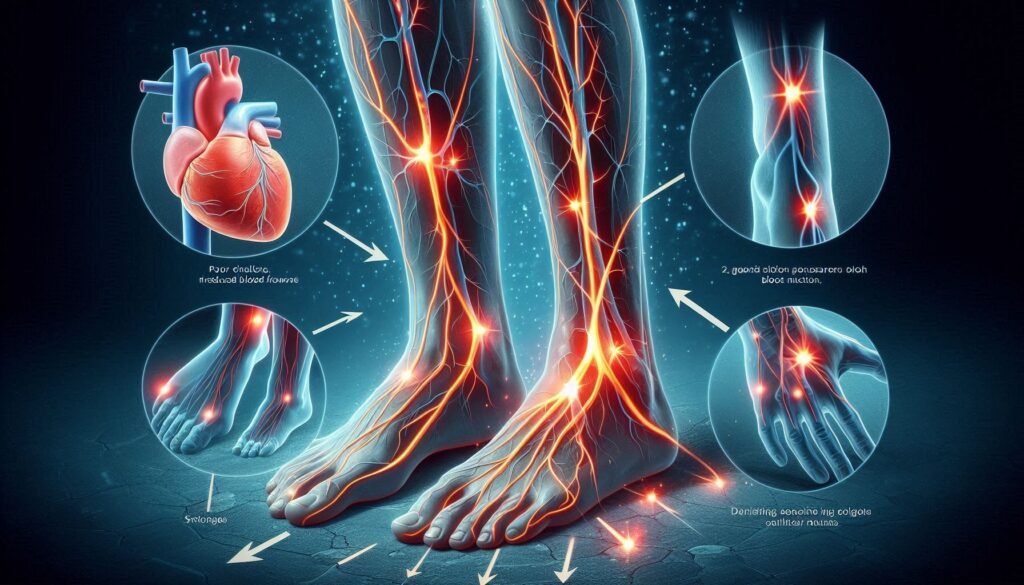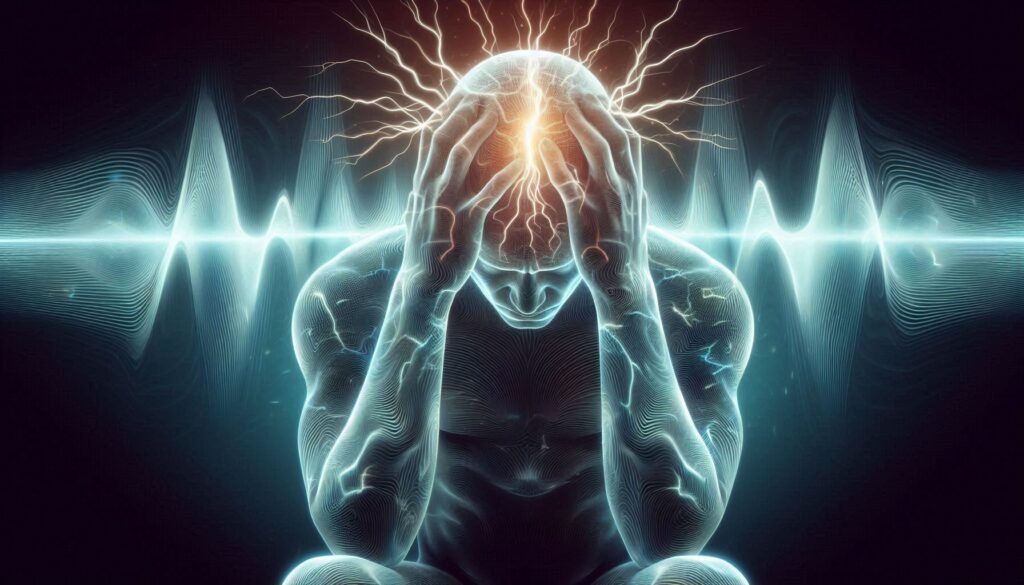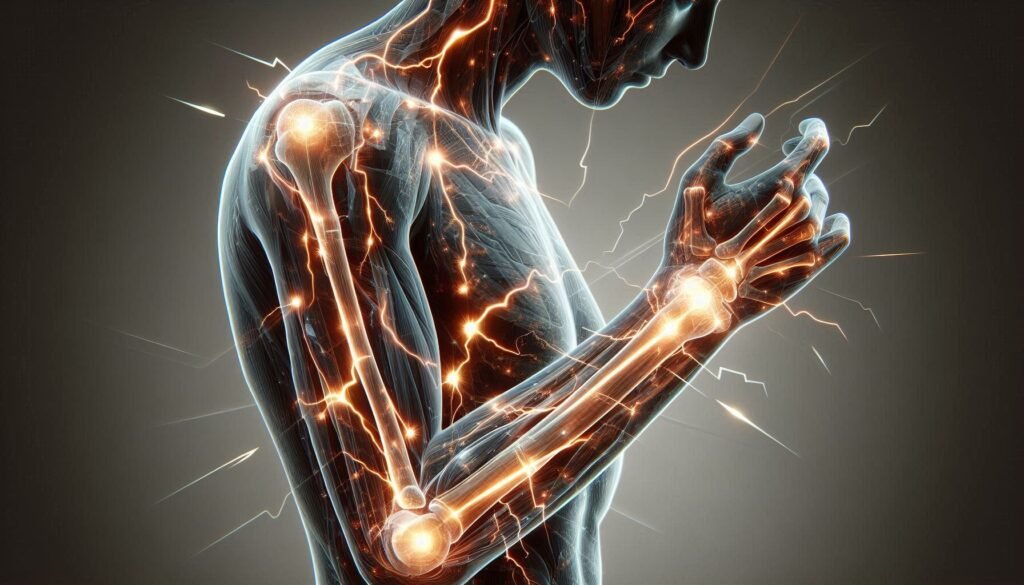Have you ever experienced that strange tingling sensation in your arms or legs, often dismissed as a mere annoyance? This phenomenon, known as paresthesia, can be deeply intertwined with the state of your circulation. Poor blood flow may seem like a minor issue, but its ripple effects on nerve function and overall health can be significant.
Understanding how inadequate circulation impacts paresthesia development is crucial for recognizing potential warning signs and taking proactive measures to improve your well-being. Let’s dive deeper into this connection and explore what it means for you and your health.

Understanding Circulation: The Basics of Blood Flow
Circulation is the lifeblood of our body, responsible for transporting oxygen and nutrients to tissues while removing waste products. It begins with the heart, which pumps oxygen-rich blood through arteries that branch out into smaller vessels. This intricate network ensures every cell receives what it needs to function properly.
As blood flows through capillaries, exchange occurs at the cellular level. Oxygen and nutrients pass from the bloodstream into cells, while carbon dioxide and other waste materials move back into circulation. The veins then carry deoxygenated blood back to the heart for re-oxygenation in the lungs.
Proper circulation is essential not just for physical activity but also for maintaining nerve health. Blood flow nourishes nerves and allows them to send signals effectively throughout your body. When this system falters, it can lead to various complications.
Understanding how circulation works lays a foundation for recognizing its effects on overall health and specific conditions like paresthesia when things go awry.
How Poor Circulation Affects Nerve Function and Sensation
Poor circulation directly impacts nerve function and sensation throughout the body. When blood flow is reduced, nerves may not receive the necessary oxygen and nutrients they require to operate effectively. This can lead to various neurological symptoms.
Reduced blood supply often results in tingling or numbness, commonly experienced in extremities like hands and feet. Without adequate circulation, these areas can become less responsive, making everyday tasks challenging.
Moreover, chronic poor circulation can cause damage over time. Nerves that are consistently deprived of essential resources may lose their ability to transmit signals accurately. This disruption affects communication between your body and brain, leading to heightened sensations or pain.
Individuals might also experience a condition known as peripheral neuropathy due to inadequate blood flow over prolonged periods. Symptoms include weakness and sensitivity within affected areas, further highlighting the critical relationship between circulation and nerve health.
Common Causes of Poor Circulation: From Lifestyle to Medical Conditions
Poor circulation can stem from various factors, ranging from lifestyle choices to underlying medical conditions. Sedentary habits are a significant contributor. When individuals spend long hours sitting or lying down, blood flow slows, leading to potential circulatory issues.
Diet also plays a crucial role. High-fat and high-sugar diets can lead to the buildup of plaque in arteries. This narrows blood vessels and reduces overall circulation efficiency. Obesity further exacerbates the problem by placing extra strain on the cardiovascular system.
Certain medical conditions contribute to poor circulation as well. Diabetes is notorious for damaging blood vessels over time due to elevated glucose levels. Additionally, hypertension raises pressure within arteries, which can impede proper blood flow.
Smoking is another critical factor that affects circulation negatively. It damages the lining of blood vessels and reduces oxygen supply throughout the body. Recognizing these causes is essential for addressing poor circulation effectively.
Peripheral Artery Disease (PAD) and Its Role in Paresthesia
Peripheral Artery Disease (PAD) is a common circulatory problem that affects blood flow to the limbs. It occurs when arteries narrow due to plaque buildup, decreasing oxygen-rich blood delivery to muscles and nerves. As a result, individuals with PAD often experience discomfort during physical activities.
One of the notable symptoms associated with PAD is paresthesia, which refers to tingling or numb sensations in the legs and feet. This sensation arises because reduced blood flow impacts nerve function. When nerves do not receive adequate oxygen, they can send false signals or fail altogether.
People suffering from PAD may find their extremities feel cold or weak. These feelings can be exacerbated by long periods of inactivity or exposure to colder temperatures. The resulting poor circulation leads to worsened paresthetic sensations over time.
Early detection and intervention are crucial for managing PAD effectively. Addressing lifestyle factors like smoking cessation, diet modifications, and exercise can help improve circulation and reduce paresthesia episodes significantly.
Raynaud’s Phenomenon: Cold Extremities and Tingling Sensations
Raynaud’s phenomenon is a condition that causes blood vessels in the extremities to constrict excessively in response to cold or stress. This results in reduced blood flow, typically affecting fingers and toes. When this occurs, affected areas can turn white or blue and feel cold.
During an episode, people often experience tingling sensations as oxygen supply diminishes. The body attempts to restore warmth, leading to a flush of color when circulation returns. However, these episodes can be uncomfortable and might occur frequently for some individuals.
Triggers for Raynaud’s can vary from environmental factors like temperature changes to emotional stressors. Those living with the condition may find it challenging to engage in outdoor activities during colder months due to their heightened sensitivity.
Managing Raynaud’s involves lifestyle adaptations such as wearing warm layers and practicing stress-relief techniques. While not life-threatening, understanding its impact on circulation helps those affected seek appropriate relief strategies promptly.
Varicose Veins and Their Impact on Lower Limb Circulation
Varicose veins are swollen, twisted veins that often appear blue or dark purple. They typically develop in the legs and can significantly affect lower limb circulation. This condition arises when valves within the veins weaken or become damaged, leading to blood pooling rather than flowing back toward the heart.
As blood accumulates in varicose veins, it creates increased pressure on surrounding tissues. This pressure can disrupt normal nerve function and sensation in the affected areas, contributing to symptoms like tingling or numbness—commonly associated with paresthesia development.
Additionally, poor circulation from varicose veins may result in a lack of oxygen and nutrients reaching lower limb tissues. Over time, this can lead to more severe complications such as skin changes or ulcers if left untreated.
Addressing varicose veins is crucial not just for cosmetic reasons but also for maintaining optimal leg health and preventing further vascular issues. Lifestyle modifications and medical interventions can help restore proper circulation and alleviate related symptoms.
The Link Between Cardiovascular Health and Paresthesia
Cardiovascular health plays a pivotal role in the overall functioning of your body, particularly in how effectively blood circulates. Healthy blood flow is essential for delivering oxygen and nutrients to tissues, including nerves. When cardiovascular issues arise, they can lead to diminished circulation, which may result in sensations like numbness or tingling known as paresthesia.
Conditions such as hypertension and high cholesterol can contribute significantly to poor circulation. These ailments often cause plaque buildup in arteries, leading to reduced blood flow. Consequently, this reduction adversely affects nerve function and sensation throughout the body.
Moreover, heart diseases are frequently linked with peripheral vascular disease (PVD), which further compromises arterial health. As these conditions progress without intervention, individuals may experience increased episodes of paresthesia.
Maintaining good cardiovascular health through regular exercise and a balanced diet is crucial for preventing these complications. By prioritizing heart health, you not only enhance your well-being but also minimize the risk of developing symptoms related to poor circulation.
Diagnosing Circulation-Related Paresthesia: Tests and Procedures
Diagnosing circulation-related paresthesia involves a thorough assessment of the patient’s medical history and symptoms. Doctors often start with a physical examination, checking for signs such as swelling, color changes in the skin, or temperature differences between limbs. These observations can provide valuable clues about underlying circulatory issues.
After the initial evaluation, healthcare providers may recommend specific tests to investigate blood flow more deeply. Doppler ultrasound is commonly used to measure blood flow in arteries and veins. This non-invasive procedure helps identify blockages or narrowing that could be causing symptoms.
Other diagnostic tools include angiography, which uses imaging techniques to visualize blood vessels directly. Blood tests might also be ordered to check for conditions like diabetes or high cholesterol that contribute to poor circulation.
In some cases, nerve conduction studies are performed to evaluate how well signals travel through nerves affected by reduced blood supply. Each test plays a crucial role in pinpointing the root cause of paresthesia related to poor circulation.
Improving Circulation: Lifestyle Changes and Medical Interventions
Improving circulation is essential for reducing the impact of poor circulation on paresthesia development. Simple lifestyle changes can make a significant difference. Regular exercise, such as walking or swimming, helps promote blood flow and strengthens the cardiovascular system. Aim for at least 150 minutes of moderate activity each week.
Diet also plays a crucial role in enhancing circulation. A balanced diet rich in fruits, vegetables, whole grains, and lean proteins supports overall vascular health. Foods high in omega-3 fatty acids like salmon and walnuts can reduce inflammation and improve blood flow.
Staying hydrated is vital too. Dehydration thickens the blood and hampers circulation. Drinking adequate water throughout the day ensures that your body functions optimally.
For those with persistent issues, medical interventions may be necessary. Treatments range from medications that improve blood flow to procedures designed to open blocked arteries. Consulting a healthcare professional will provide tailored recommendations based on individual needs.
When to Seek Medical Help: Red Flags in Circulation-Related Paresthesia
Recognizing when to seek medical help is crucial for anyone experiencing paresthesia linked to poor circulation. Certain symptoms should raise immediate concern. If you notice persistent tingling or numbness, especially if it spreads rapidly, take action.
Pay attention if these sensations are accompanied by pain in your chest, jaw, or arm. This could indicate a serious cardiovascular issue that needs urgent care. Sudden weakness or paralysis on one side of the body can also signal a stroke and requires emergency intervention.
Changes in skin color—such as blue or pale extremities—can be another warning sign of inadequate blood flow. Additionally, if you experience coldness in your limbs not relieved by warming them up, it’s time to consult with a healthcare professional.
Never ignore ongoing issues like swelling or cramping in the legs while walking; this may point toward peripheral artery disease (PAD). Early diagnosis and treatment can significantly improve outcomes when it comes to conditions related to poor circulation and paresthesia development. Always err on the side of caution when it comes to your health; getting timely medical advice can make all the difference.
.


